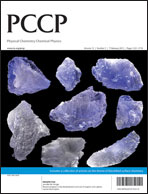Local surface structure effect on reactivity of molecules confined between metallic surfaces
Abstract
Interactions between metallic surfaces separated by nanometer distances create an unusual reactivity environment. Here we evaluate the effect of the geometry given by differences in the structures of the interacting surfaces and by the presence of steps.


 Please wait while we load your content...
Please wait while we load your content...